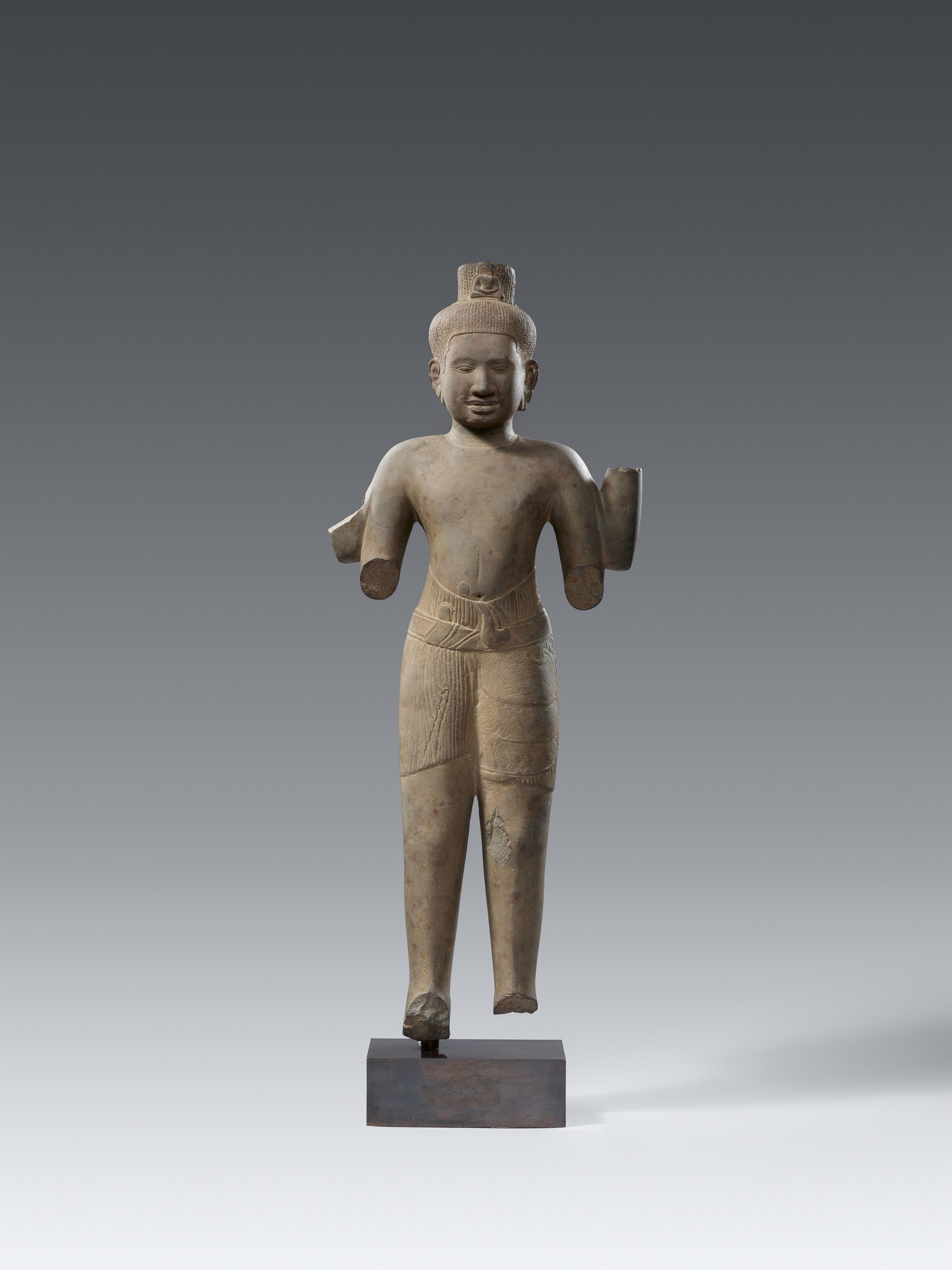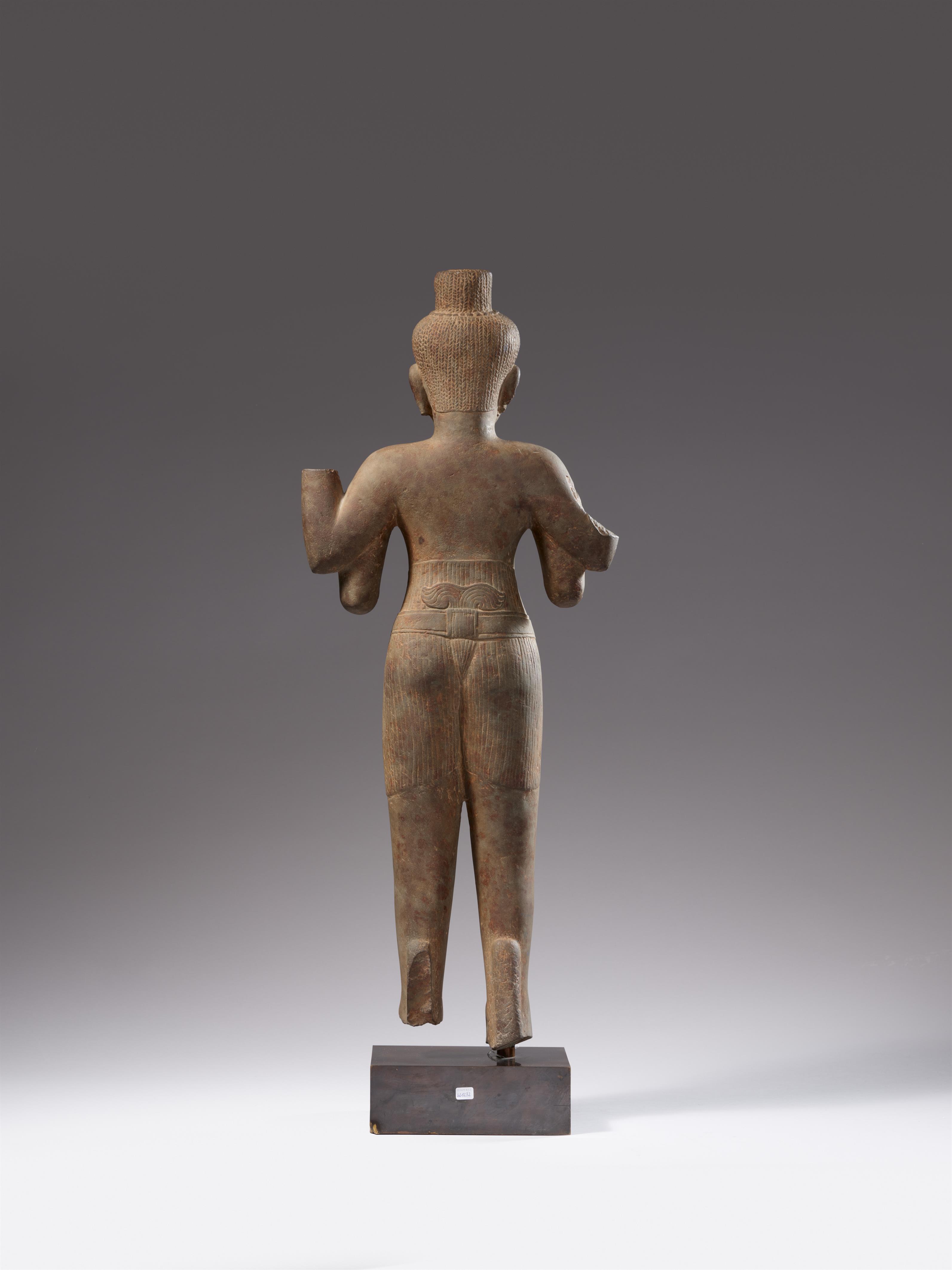A gray sandstoe Baphuon-style figure of a Lokeshvara. Second half 11th century
Standing with four arms, dressed in a pleated sampot held together by a belt that reaches high into the back, where it is gathered by a knot in the shape of a butterfly, on the left thigh a pouch whose smooth fabric contrasts with the fine pleating. Finely braided strands of hair cover the head and cylindrical chignon, in front of which sits a figure of Amitabha in meditation. Mounted.
Height 81.5 cm
This extraordinarily fine sculpture represents Avalokiteshvara, the Bodhisattva of Immeasurable Compassion, clearly identifiable by the small seated figure in front of the matted chignon on the top of his head. It represents Buddha Amitabha, one of the Five Cosmic Buddhas and spiritual father of Avalokiteshvara. The present bodhisattva has four arms which allude to his abilities to remove complaints and grievances, whilst the respective hands formerly held a lotus, a vase, prayer beads and a book.
The manner the waistcloth hugs the body, the way it is knotted and fastened at the hip, and the elegance of face and body proportions correspond to the Baphuon style, which represents an apex in Khmer art. The Baphuon style has its origins in the decoration of the eponymous Hindu temple, which was built in the mid-11th century and was located in the centre of the former Khmer capital Yasodharapura in the Angkor region. Since Hinduism was the state religion in the Khmer Empire during this period, this Buddhist sculpture must have been created outside the Angkor area and is thus exceedingly rare.
Comparable to the present Avalokiteshvara figure is the statue in the Norton Simon Museum, see P. Pal Art from Sri Lanka & Southeast Asia, Asian Art at the Norton Simon Museum, vol. 3, New Heaven and London 2004, no. 145; in the Musée Guimet there is another figure of Avalokiteshvara, albeit dated a few decades earlier, see P. Baptiste and Th. Zephir, L'Art khmer das les collections du Musée Guimet, Paris 2008, plate 48b.
Provenance
Spink & Son Ltd., London
Private collection, Belgium, acquired from the above dealer, 10.10.1984 (invoice available)
Literature
Advertised by Spink & Son Ltd., London, in: Arts of Asia, July - August 1984




